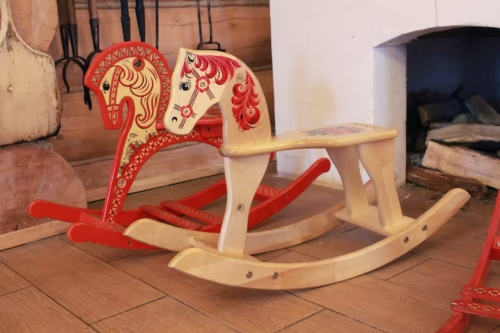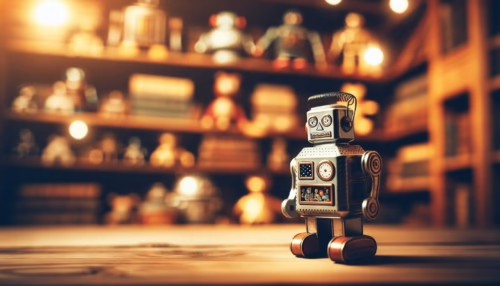Can you still recall the sheer delight brought by simple objects from your childhood? More specifically, have you ever considered how these seemingly ordinary toys could transform into significant investment opportunities over time? This notion may sound surprising, yet it perfectly encapsulates the current dynamics of the vintage toy market. Through this exploration, he aims to discern the origins, trends, and investment potential inherent in vintage toys, illuminating a world where nostalgia and financial gain intermingle.

Table of Contents
Historical Perspective on Vintage Toys
Every vintage toy carries with it a unique history that stretches beyond its physical form. Understanding the origins of vintage toys can provide valuable insights into their collectible value today. The notion of toys dates back centuries, but the commercialization and popularization of toys blossomed in the late 19th and early 20th centuries. As mass production gained a foothold, toys were manufactured in larger quantities, creating an industry that reflected both cultural moments and technological advancements.
The Evolution of Toy Manufacturing
Toy manufacturing has seen drastic changes over the decades, and each era brought unique innovations that are extensively reflected in the toys produced. Initially, toys were predominantly wooden and hand-crafted, symbolizing raw craftsmanship and creativity. With the Industrial Revolution, metal and later plastic became popular, leading to new forms and durability. Each material transition paralleled societal changes, influencing both the toy’s design and its durability over time.
Anecdotes and Influential Toys
Consider the impact of iconic toys such as the original teddy bear designed in the early 1900s, or the beloved Barbie doll introduced in 1959. These items are not only cherished for their play value but have become historical artifacts. Such toys, originating from specific cultural and social contexts, hold immense value today, not only as nostalgia-fueled collectables but also as valuable investment pieces.
Key Factors Influencing the Vintage Toy Market
The vintage toy market is governed by a myriad of factors that investors and collectors must consider. These include the condition of the toy, its historical significance, rarity, and popularity, among others. By dissecting these elements, one gains a clearer understanding of which toys hold potential for appreciation and investment.
Condition and Preservation
The condition of a vintage toy is perhaps the most critical factor in determining its value. Collectors prize toys that are well-preserved and come with their original packaging. Slight damages or missing parts can significantly diminish a toy’s worth. Hence, proper preservation, such as climate control and secured showcases to prevent wear and tear, becomes imperative.
Historical Significance and Cultural Impact
Toys with historical significance or cultural resonance are often more desirable. Consider action figures from iconic movie franchises like “Star Wars” or “Transformers.” Such toys resonate with generations who experienced these cultural phenomena, thereby boosting their collectability and increasing demand. The greater the cultural impact, the higher the potential value.
Rarity and Availability
Rarity often turns ordinary items into highly sought-after collectibles. Limited edition toys, discontinued lines, or toys with production errors can amass substantial value over time. The law of supply and demand quintessentially governs this aspect; as the availability dwindles, the value inherently escalates.

Identifying Investment Opportunities in Vintage Toys
Amidst a treasure trove of bright colors and imaginative designs lies the potential for financial gain. Recognizing investment opportunities involves a strategic approach and a keen eye for detail. A few aspects demand attention for those venturing into this intriguing domain.
Brand Recognition and Legacy
Invest in toys from renowned brands recognized for quality and innovation. Mattel, Hasbro, and LEGO have established stellar reputations, steadily maintaining their significance in both the primary and secondary markets. Unique items from these brands often perform well, promising stability and potential returns over time.
Trend Forecasting and Market Analysis
Much like any investment asset, market trends play a pivotal role in the vintage toy sector. Traditional economic principles, market sentiment, and even broader cultural trends influence prices and demand. Regularly updated market analyses and forecasts can aid in identifying emerging trends, allowing investors to make informed decisions.
Expert Consultation and Networking
Building a network with seasoned collectors and industry professionals can provide invaluable guidance. Expertise in the field aids in authenticating potential purchases and ensuring that investors avoid counterfeit products, which can often plague the market.
Strategies for Maximizing Investment Returns
Investing in vintage toys is not merely about purchasing and holding items; it involves strategic management to maximize returns. Careful maneuvering in various stages of the investment journey can lead to substantial gains.
Storage and Maintenance
Proper storage reduces deterioration, preserving the toy’s condition. Maintaining an inventory with detailed condition reports and photographic documentation ensures better management and resale capabilities. Additionally, a well-maintained item always commands a higher price.
Timing and Market Conditions
Knowledge of market conditions is crucial. Specific events, such as anniversaries, nostalgic revivals in media, or new films, can temporarily elevate toy demand and prices. A watchful eye on such developments can provide opportunities to sell at a premium.
Diversification Across Eras and Types
To mitigate risk, an investor should consider diversifying across different eras and types of toys. Mixing toys from various timelines, franchises, and manufacturers can balance an investment portfolio, reducing susceptibility to market fluxes for specific categories.

Future Trends in the Vintage Toy Market
Staying ahead of future trends will distinguish successful vintage toy investors from the rest. The market is ever-evolving, influenced by technological developments, consumer preferences, and socio-cultural shifts.
Technological Integration
Predictions indicate a gradual blending of technology with vintage toy collecting, such as apps for authentication and augmented reality experiences. Embracing these advances can enhance the appeal of owning vintage toys, rejuvenating interest among tech-savvy generations.
Sustainability Concerns
In a world increasingly prioritizing sustainability, environmentally conscious collecting is emerging as a trend. Toys that illustrate sustainable manufacturing practices or those that contribute positively to environmental causes may gain favor, attracting a new class of collectors.
Conclusion
The vintage toy market, akin to an intricate puzzle, intertwines nostalgia with potential financial rewards. Investors can uncover immense opportunities by understanding the history, trends, and strategic nuances of the market. Whether driven by passion for collectibles or the lure of profit, engaging thoughtfully and continuously with the vintage toy market promises an enriching experience.

The Thrill of Collecting Vintage Toys: Nostalgia and Investment

